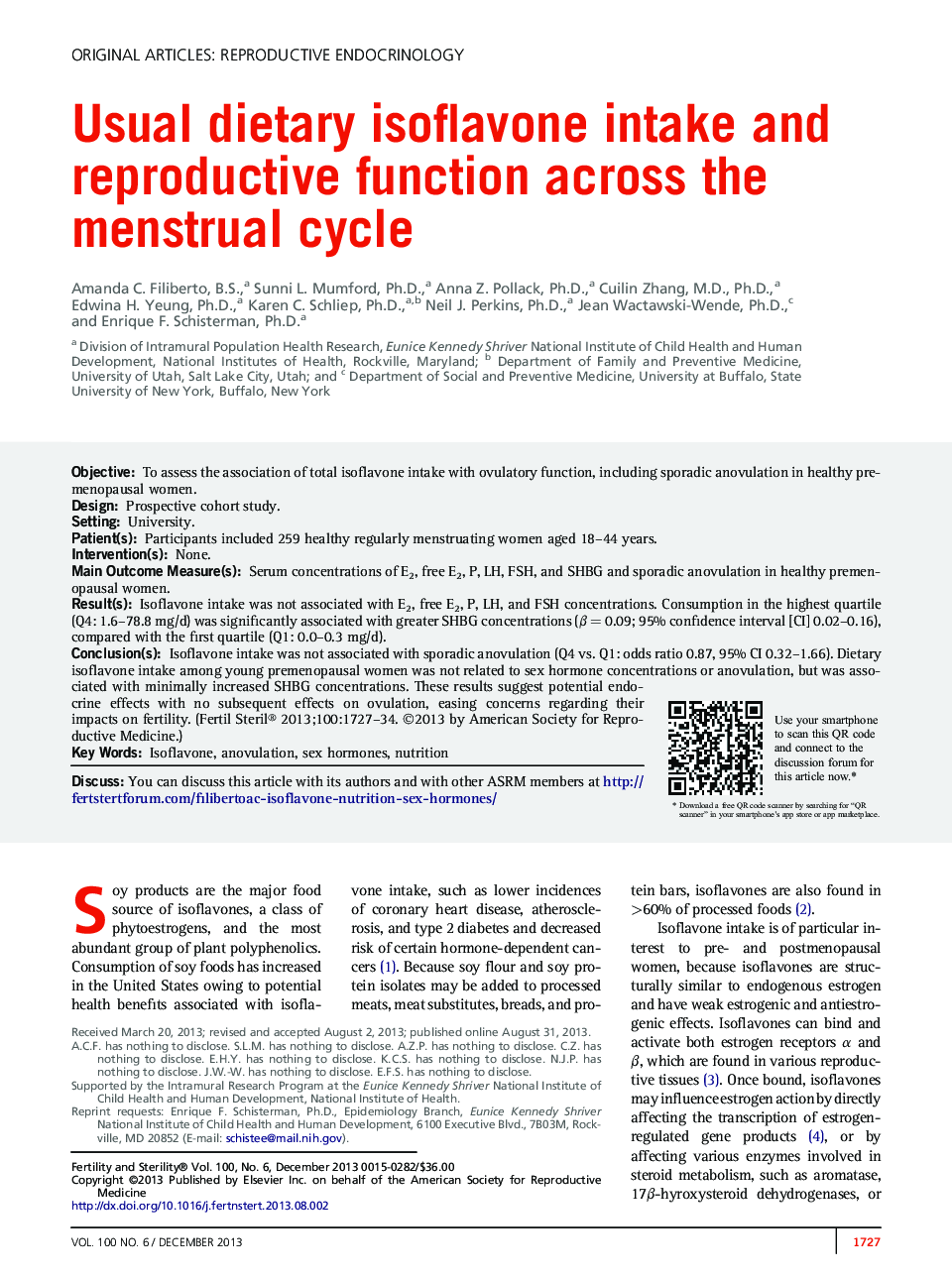| Article ID | Journal | Published Year | Pages | File Type |
|---|---|---|---|---|
| 3938573 | Fertility and Sterility | 2013 | 8 Pages |
ObjectiveTo assess the association of total isoflavone intake with ovulatory function, including sporadic anovulation in healthy premenopausal women.DesignProspective cohort study.SettingUniversity.Patient(s)Participants included 259 healthy regularly menstruating women aged 18–44 years.Intervention(s)None.Main Outcome Measure(s)Serum concentrations of E2, free E2, P, LH, FSH, and SHBG and sporadic anovulation in healthy premenopausal women.Result(s)Isoflavone intake was not associated with E2, free E2, P, LH, and FSH concentrations. Consumption in the highest quartile (Q4: 1.6–78.8 mg/d) was significantly associated with greater SHBG concentrations (β = 0.09; 95% confidence interval [CI] 0.02–0.16), compared with the first quartile (Q1: 0.0–0.3 mg/d).Conclusion(s)Isoflavone intake was not associated with sporadic anovulation (Q4 vs. Q1: odds ratio 0.87, 95% CI 0.32–1.66). Dietary isoflavone intake among young premenopausal women was not related to sex hormone concentrations or anovulation, but was associated with minimally increased SHBG concentrations. These results suggest potential endocrine effects with no subsequent effects on ovulation, easing concerns regarding their impacts on fertility.
